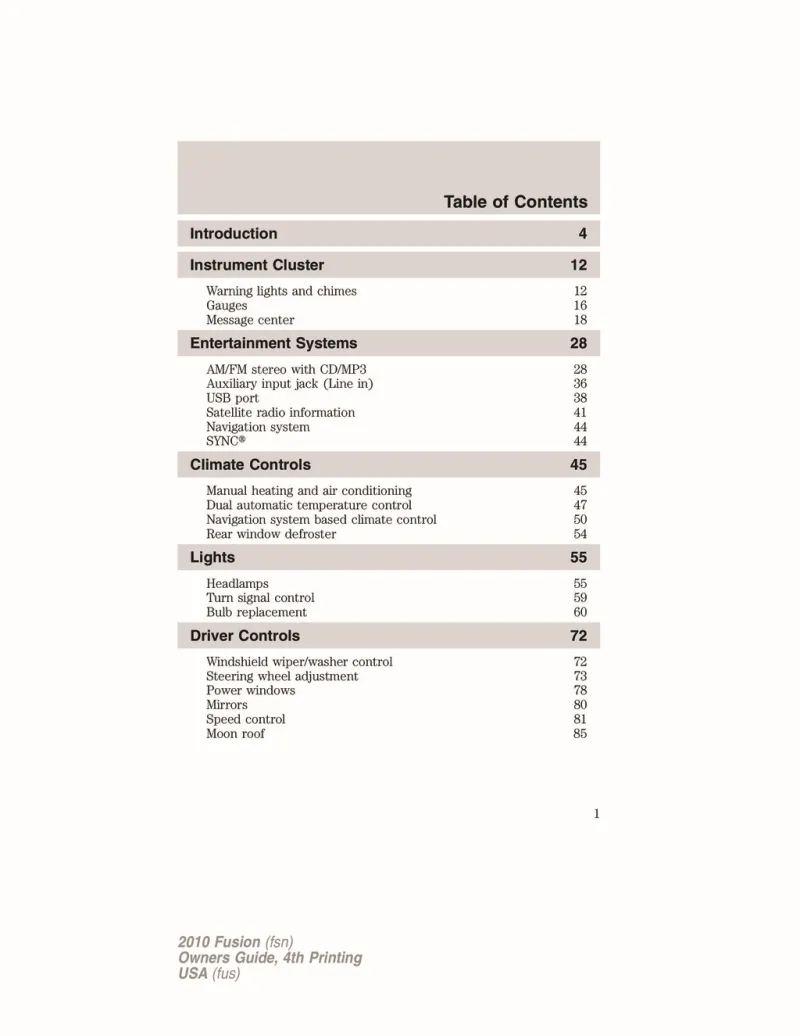2010 Ford Fusion Owner's Manual

Table of Contents
2010 Ford Fusion Overview
Introduction
The 2010 Ford Fusion stands out as a sleek and sophisticated midsize sedan, combining style with efficiency and performance. Designed to cater to a variety of driving needs, the Fusion offers a spacious interior, a comfortable ride, and an array of advanced technology features. It is a compelling choice for individuals and families seeking a reliable and well-rounded vehicle in an increasingly competitive automotive market.
Powertrains
The 2010 Fusion boasts a diverse range of powertrains to suit different preferences. The base engine is a 2.5-liter four-cylinder that delivers a respectable 175 horsepower, providing a balanced mix of power and fuel efficiency. For those looking for a little more zest, there's an available 3.0-liter V6 producing 240 horsepower. Additionally, the 2.5-liter I4 engine is offered with a hybrid option that emphasizes eco-friendliness while maintaining solid performance. A six-speed manual or six-speed automatic transmission backs these engines, ensuring smooth gear transitions and an engaging driving experience.
Trims
The 2010 Ford Fusion is available in four main trims: S, SE, SEL, and Sport. Starting with the base S trim, it comes well-equipped with features like keyless entry and a four-speaker audio system. The SE adds options like alloy wheels and a power driver's seat, while the SEL enhances comfort with premium audio and leather seating. For those seeking a sporty feel, the Sport trim includes a more powerful V6 engine, performance-tuned suspension, and unique styling cues.
Features
Inside, the 2010 Fusion impresses with its spacious cabin and thoughtful features. A user-friendly dashboard includes available options like Ford's Sync system for hands-free phone use and music streaming. Safety is also a priority with standard front and side airbags, anti-lock brakes, and traction control, ensuring a secure driving experience for all passengers.
Owners Manual
The owners manual for the 2010 Ford Fusion serves as a comprehensive guide to help owners navigate the vehicle's features, maintenance schedules, and troubleshooting tips. Whether you're looking to understand the advanced technology or ensure proper vehicle care, this manual is an essential resource for maximizing the ownership experience.
User manual download
The Ford Fusion owner manual for the 2010 model year is to be found in PDF downloadable format on this page. The owner manual for the model year 2010 is free and in English, but the repair manuals are usually not easy to get and may cost more.
Manual Questions
Fill the form below and someone will help you!

